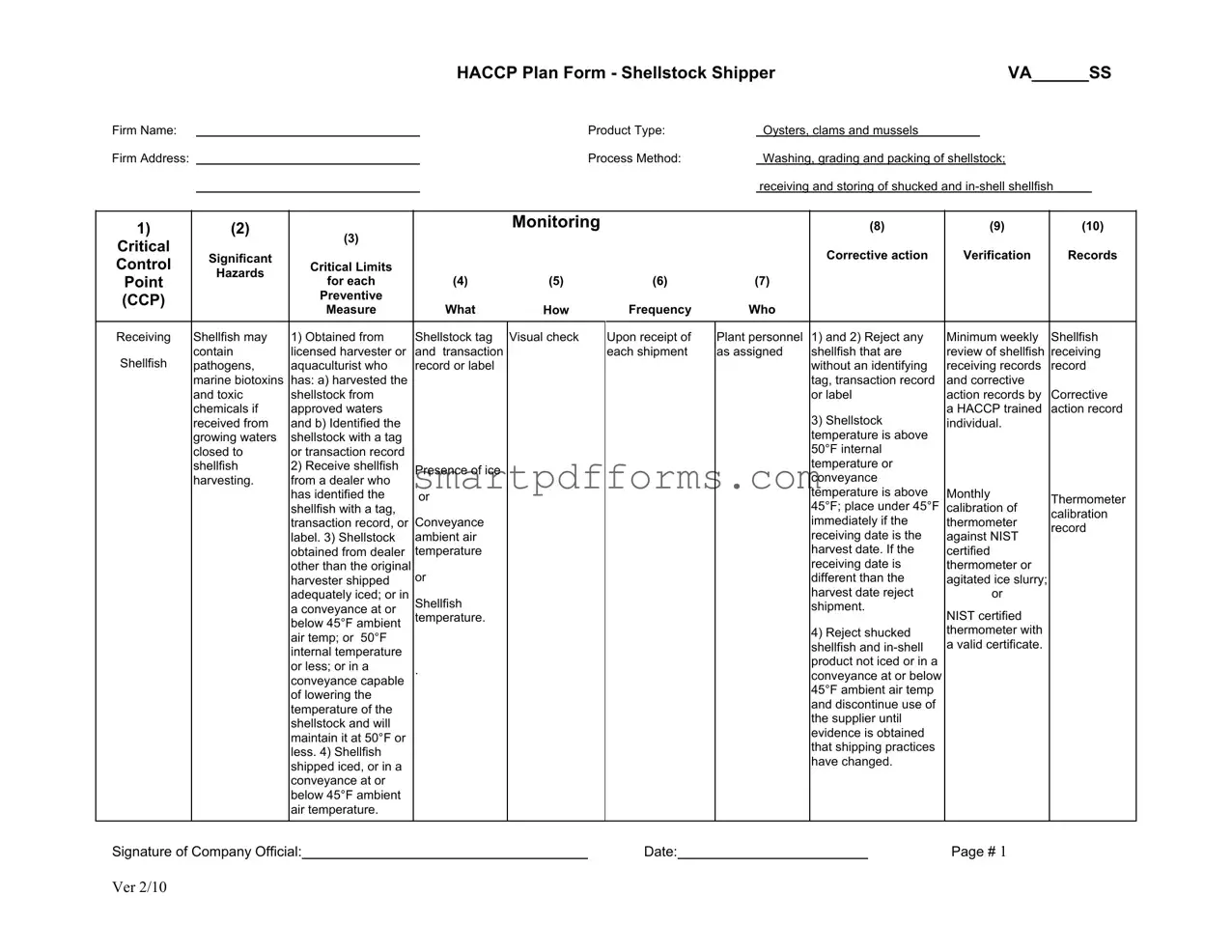Blank Haccp Plan Oyster PDF Template
The HACCP Plan Oyster Form serves as a critical tool for maintaining safety in the handling, washing, grading, packing, receiving, and storing of shellfish such as oysters, clams, and mussels. It outlines essential control points, critical limits, monitoring procedures, corrective actions, verification activities, and record-keeping requirements to prevent foodborne illnesses related to shellfish. For those in the shellfish shipping industry looking to enhance food safety and comply with regulations, filling out this form is a step in the right direction. Click the button below to learn more about how to properly fill out the form.
Make This Document Now


